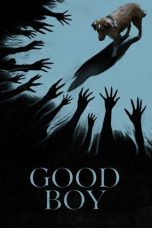Rear Window (1954) – A Timeless Classic in Suspense and Suspicion
Introduction
“Rear Window,” directed by Alfred Hitchcock and released in 1954, is widely regarded as one of the greatest suspense films of all time. Known for its innovative use of limited space and its exploration of voyeurism, the film is a masterpiece of tension and psychological intrigue. Starring James Stewart and Grace Kelly, “Rear Window” continues to captivate audiences with its clever storytelling and meticulous direction. This review delves into the film’s plot, thematic elements, and current viewing options.
Plot and Structure
“Rear Window” centers on a wheelchair-bound photographer who becomes obsessed with watching his neighbors and suspects one of them of murder:
- The Premise: The film follows L.B. “Jeff” Jefferies (played by James Stewart), a professional photographer who is confined to a wheelchair after a leg injury. To pass the time during his recovery, Jeff spends his days observing the lives of his neighbors through the rear window of his apartment.
- The Suspicion: Jeff begins to suspect that one of his neighbors, Lars Thorwald (played by Raymond Burr), has murdered his wife. His suspicions are fueled by Thorwald’s suspicious behavior and the apparent disappearance of his wife.
- The Investigation: As Jeff becomes more convinced of Thorwald’s guilt, he enlists the help of his girlfriend, Lisa Fremont (played by Grace Kelly), and his nurse, Stella (played by Thelma Ritter). The trio attempts to gather evidence and unravel the mystery, leading to increasing tension and danger.
- The Climax: The film builds to a suspenseful climax as Jeff’s investigation leads to a dramatic confrontation. The resolution ties together the film’s themes of voyeurism, suspicion, and the nature of truth.
Performance Highlights
The film’s performances are central to its success and impact:
- James Stewart as Jeff Jefferies: Stewart’s portrayal of Jeff is marked by a mix of vulnerability, curiosity, and determination. His performance captures the character’s growing obsession and the emotional toll of his confinement.
- Grace Kelly as Lisa Fremont: Kelly’s portrayal of Lisa is characterized by elegance, intelligence, and resourcefulness. Her performance provides a counterbalance to Jeff’s paranoia and adds depth to the film’s exploration of relationships.
- Raymond Burr as Lars Thorwald: Burr’s portrayal of Thorwald adds a sense of menace and mystery. His performance enhances the film’s tension and contributes to the ambiguity of the central conflict.
Thematic Depth
“Rear Window” explores several profound themes:
- Voyeurism and Privacy: The film examines the concept of voyeurism and the ethical implications of observing others. It raises questions about the boundaries of privacy and the consequences of intruding into other people’s lives.
- Suspicion and Perception: The film delves into the nature of suspicion and how personal perceptions can shape one’s understanding of reality. It explores the difficulty of discerning truth from illusion and the impact of preconceived notions.
- Isolation and Confinement: Jeff’s physical confinement in his apartment mirrors his emotional and psychological isolation. The film explores how confinement affects one’s perspective and sense of agency.
- Relationships and Trust: The dynamic between Jeff and Lisa highlights themes of trust and partnership. The film examines how relationships are tested under pressure and the role of mutual support in overcoming challenges.
Cinematic Excellence
The film’s direction and technical aspects contribute to its status as a classic:
- Direction and Suspense: Alfred Hitchcock’s direction is characterized by its mastery of suspense and psychological tension. The film’s pacing and use of space create a gripping and immersive experience.
- Cinematography: The cinematography, by Robert Burks, employs a single set—the courtyard visible from Jeff’s window—to create a sense of claustrophobia and focus the audience’s attention on the unfolding drama. The use of long takes and careful framing enhances the film’s suspense.
- Score and Music: The film’s score, composed by Franz Waxman, complements the narrative with its evocative and atmospheric music. The soundtrack adds to the film’s overall tension and emotional impact.
Cultural Impact and Reception
“Rear Window” has had a significant impact on both audiences and critics:
- Critical Acclaim: The film received widespread critical acclaim for its innovative direction, suspenseful storytelling, and strong performances. It is regarded as one of Hitchcock’s greatest works and a landmark in the thriller genre.
- Influence on Film and Media: “Rear Window” has influenced numerous films and television shows, particularly in its use of voyeurism and suspense. It has been referenced and analyzed in various forms of media and is considered a touchstone in cinematic suspense.
- Enduring Popularity: The film remains a beloved classic, appreciated for its clever narrative and meticulous craftsmanship. Its themes and techniques continue to resonate with audiences and filmmakers alike.
Streaming and Availability
For those interested in watching “Rear Window,” the film is available on various platforms:
- HBO Max: Available for streaming on HBO Max, which offers a wide range of classic films and series.
- Amazon Prime Video: Available for rent or purchase on Amazon Prime Video, providing convenient access for viewers.
- Apple TV: The film can be rented or purchased on Apple TV, offering another option for viewing.
- Google Play Movies & TV: Available for rent or purchase on Google Play, providing additional flexibility for viewers.
Conclusion
“Rear Window,” directed by Alfred Hitchcock, is a timeless classic that expertly explores themes of voyeurism, suspicion, and confinement. Through its masterful direction, innovative use of space, and compelling performances, the film remains a standout in the suspense genre. Available on various streaming platforms and digital services, “Rear Window” continues to captivate audiences with its gripping narrative and psychological depth.
















